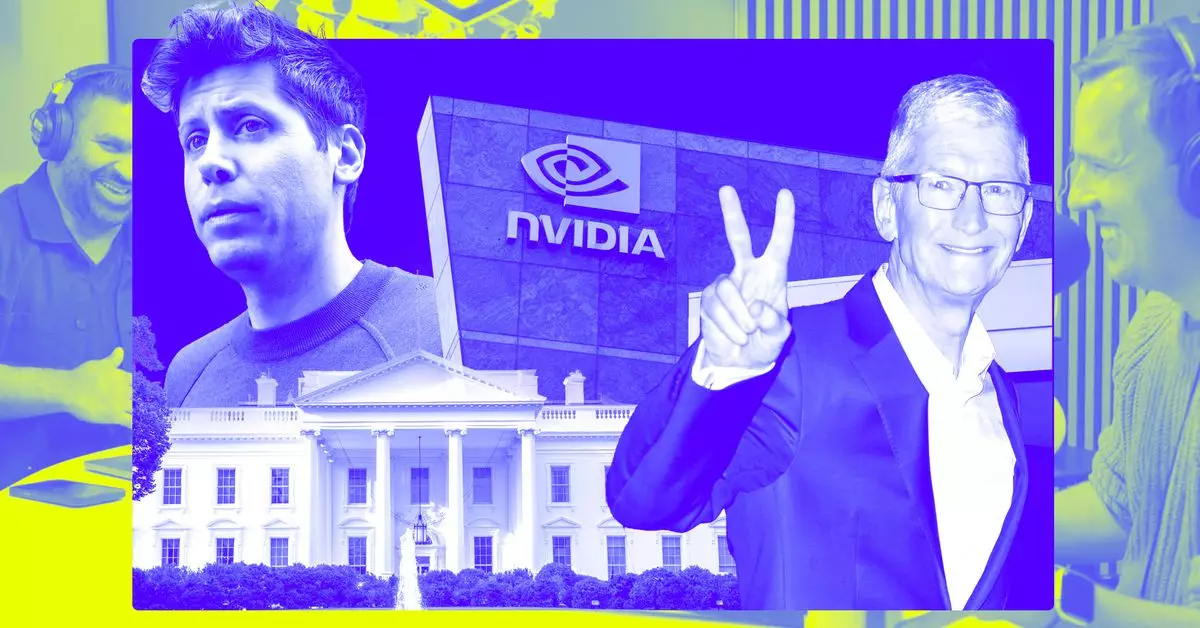As we gaze into the crystal ball of technological advancements, we often ponder what the near future holds. While speculative foresight can provide intriguing possibilities, it’s vital to approach these predictions with a critical mindset. In this exploration, we’ll analyze various predictions regarding the tech landscape in 2025, address the credibility of these forecasts, and consider the broader implications of technological evolution in our daily lives.
The endurance of Big Tech CEOs remains a contentious topic. Predictions such as Tim Cook still leading Apple and the other tech giants maintaining their current leadership suggest a surprising lack of upheaval in an industry notoriously known for its dynamic shifts. One could argue that the retention of these leaders indicates stability, but it might also reflect a stagnation of innovative spirit at the helm of major tech companies. Historically, we see that significant breakthroughs often accompany leadership changes, raising the question: are we safeguarding stability at the expense of innovation?
This notion is further compounded by concerns over antitrust regulations and governmental scrutiny surrounding these massive corporations. While it’s conceivable that some companies avoid a shakeup in leadership, the potential for significant disruption remains high, especially in today’s climate of increased regulatory pressures. Would any of these CEOs resist adapting their strategies to navigate these challenges, or are they merely placeholders while larger forces work beneath the surface?
Another noteworthy prediction is Nvidia emerging as the most valuable company in the world. This claim may seem audacious, yet it is rooted in the increasing reliance on AI and graphics processing technologies, which Nvidia spearheaded. However, one must approach this assertion cautiously. Stock valuations can be highly volatile and dependent on market sentiment, technological adoption rates, and competitive dynamics.
Nvidia’s rise signals a possible transition to a tech landscape where a company distinctly leads due to its innovation-centric approach. Yet, it also raises concerns about whether this narrow focus on Nvidia as a leader overshadows other significant players that might emerge. In an age defined by rapid advancements, it becomes increasingly critical to acknowledge that today’s giant could be tomorrow’s underdog if they fail to adapt to changing technological tides.
The social media realm is witnessing turbulence, with platforms like Snap potentially facing acquisition and the anticipated seismic impact of gaming blockbuster GTA VI. The uncertainty surrounding these scenarios showcases the shifting currents of this dynamic landscape. Each prediction articulates a possible future, but the ambiguity lies in the factors influencing these outcomes. For instance, if Snap were to be acquired, which entity would be willing to gamble on its revival? Moreover, GTA VI’s projected success underscores gaming’s cultural significance, but can it maintain the hype in an increasingly competitive space?
Furthermore, the competitive trajectory of platforms like BlueSky versus Threads brings us to critical reflections on user preference and platform sustainability. Just because a platform ascends in relevance doesn’t guarantee perpetual success if it overlooks user engagement and value delivery. The nuances of consumer trends are often underappreciated, leading to misguided strategies and unforeseen downturns.
The assertions surrounding AI scandals and the transition of OpenAI into a for-profit entity prompt us to reconsider our relationship with technology. As we integrate AI deeper into our lives, ethical implications materialize, demanding rigorous scrutiny and responsible development. The specter of AI misuse looms large, reinforcing the need for transparent practices as society pivots towards a more interconnected existence.
Moreover, if we accept that a “huge, society-sized AI scandal” is inevitable, it invites speculation about what sort of safeguards we are currently middling with. Inadequate foresight in AI governance could render us vulnerable to unintended consequences, and thus we should prioritize establishing robust frameworks for ethical AI development.
The tech landscape of 2025 is rife with speculation and uncertainty. While alluring predictions prompt excitement, we must embrace a critical perspective towards these narratives. By understanding the complexities surrounding leadership dynamics, market valuations, platform sustainability, and the ethical dimensions of technology, we can develop a more nuanced understanding of the potential futures that lie ahead. The journey towards these possibilities is not a straightforward path but a tapestry woven with innovation, challenges, and opportunities. Embracing this uncertainty allows us to adapt and evolve in a rapidly changing technological environment.

